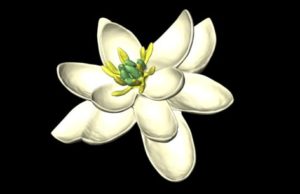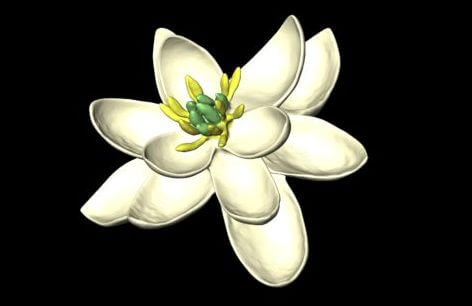VIENNA — The appearance of the ancestor of all flowers was a secret locked away in the vault of time. Until now.
Unveiled by a team of international researchers, a 3D model of what the oldest of flowers might have looked like has been created through a recent large scale study. By combining massive amounts of data on hundreds of flower species with DNA analysis, scientists are now able to peer far back into the evolutionary past to glimpse their possible ancient form.

And the new model of such “ancestral flowers” shows something quite different than what they were previously thought to look like.
“When we finally got the full results, I was quite startled until I realized that they actually made good sense,” says study lead author Hervé Sauquet in a press release. “No one has really been thinking about the early evolution of flowers in this way, yet so much is easily explained by the new scenario that emerges from our models.”
Sauquet, an Associate Professor at Université Paris-Sud in France, was joined by University of Vienna Professor Juerg Schoenenberger in coordinating the research.
“These results call into question much of what has been thought and taught previously about floral evolution,” adds Schoenenberger.
According to the researchers, it was previously thought that the earliest flowers’ organs were arranged in a spiral pattern. But the new results show a bisexual form, “with both female (carpels) and male (stamens) parts, and with multiple whorls (concentric cycles) of petal-like organs, in sets of threes.”
The researchers noted part of what makes the study of flowers so interesting is that they are a relatively new development in the evolution of plants. In this case, “relatively new” means between 140 and 250 million years old. Yet, flowering plants are now “by far the most diverse group of plants on earth” with over 300,000 identified species. Quite a bouquet.

The study that generated the 3D model comes after several other recent and important findings on ancient flowers — one being the discovery of a cretaceous period fossil of an aquatic plant. Looking something like a rough ink pressing on the surrounding stone, this fossil gave scientists a two dimensional glimpse at its shape.
A PBS article on the 2015 discovery noted that the approximately 130-million-year-old aquatic specimen could possibly represent the world’s first flower species.
That same year, American entomologist George Poinar, Jr. finally submitted a flower he found trapped in amber back in 1986 to Rutgers University for analysis.
According to an article in The New Yorker, Poinar had previously discovered several other important historical specimens trapped in amber, including the “well-preserved female fly in a droplet of forty-million-year-old Baltic amber” that inspired Michael Crichton to write Jurassic Park.
When Rutgers University professor Lena Struwe analyzed Poinar’s flower in 2015, nearly 30 years after it’s discovery, she identified it as belonging to a species completely new to science. It had been trapped in the amber for at least 15 million years.
“These flowers looked like they had just fallen from a tree,” Poinar said in a press release last year.
A professor emeritus at the Oregon State University College of Science, Poinar’s home school had been involved in publishing an even more astounding discovery in 2014.
Then, they revealed a cluster of 18 tiny flowers that had been discovered perfectly preserved in 100-million-year old amber pulled from mines in the Hukawng Valley of Myanmar. What was astonishing about this discovery was that it captured the flowers in the process of reproduction.
“In Cretaceous flowers we’ve never before seen a fossil that shows the pollen tube actually entering the stigma,” Poinar said then in a news release on the discovery. “This is the beauty of amber fossils. They are preserved so rapidly after entering the resin that structures such as pollen grains and tubes can be detected with a microscope.”

As the recent 3D model made by Sauquet and Schoenenberger’s team adds to such monumental insights about ancient flowers, a new era of research is shown to be fully underway. Now scientists aren’t just unearthing views of past eons from rock and amber, but unlocking visual information with the help of DNA and large sets of data.
“The results are really exciting!” says Maria von Balthazar, a senior scientist and specialist of floral morphology and development at the University of Vienna. “This is the first time that we have a clear vision for the early evolution of flowers across all angiosperms.”
The findings and model were published this month in an article in Nature Communications.

Looks like a Magnolia flower…